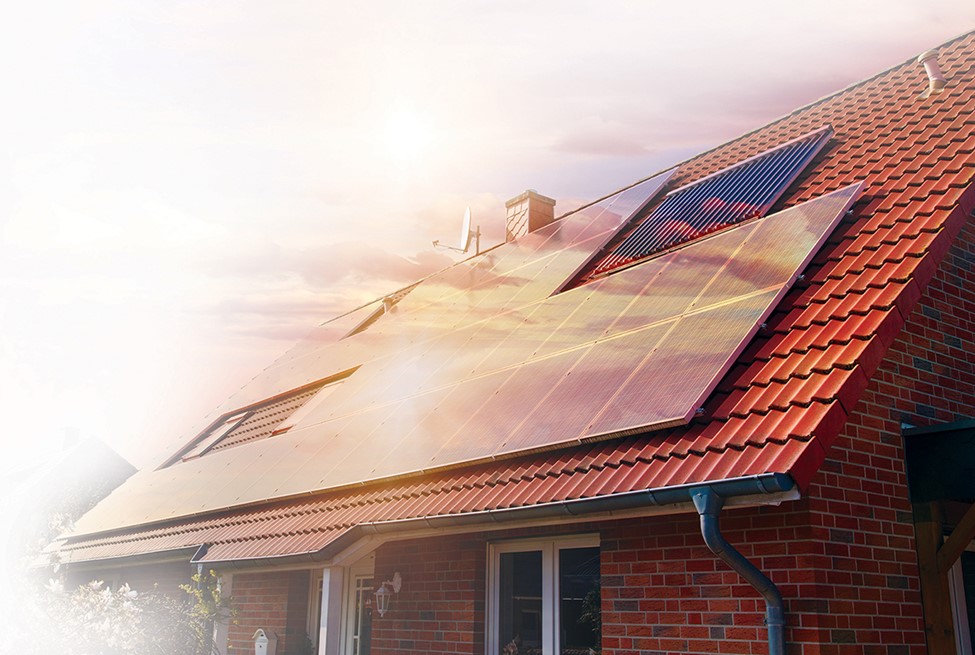Like other countries, Egypt is witnessing longer and hotter summers. Air conditioners remain on longer, using more electricity. One reason the Ministry of Electricity cited for extending rolling blackouts from the end of August to the end of October was higher-than-normal electricity consumption because temperatures were noticeably higher than last year.
Green and sustainable architectural concepts when designing new homes can keep new homes and developments cooler, thus requiring less power. “It is always cost-efficient to introduce best practice at the start of the project brief and integrate climate resilience in the construction and operational functions, says Sarah El Battouty, Chairman and Founder of Egypt-based ECOnsult Architecture. “This has to be communicated and made clear from the architectural concepts and all throughout.”
Local developers should integrate those sustainable architecture concepts into all new projects and invest in upgrading existing ones. ”The negative effects of climate-induced stresses are felt in all sectors and income strata, all of which inhabit buildings,” says El Battouty. “Architecture is responsible for achieving programmatic and human needs inside spaces and cannot ignore the necessity to respond to heat stress, water scarcity, rising utility bills and complex technology.”
MENA climate
In a January report, the U.N. Environment Programme (UNEP) cited the MENA region as particularly vulnerable to the effects of climate change. When average temperatures reach 2 degrees Celsius above pre-industrial levels, heat extremes will occur during about 30% of the summer, it said.
If warming is not reduced by 2030, the UNEP report projects MENA countries will be 4 degrees Celsius hotter, creating a “new norm of extreme temperatures, up to 56 degrees Celsius.” Some regions could see temperatures 8 degrees higher throughout the year.
Along with rising heat, there is likely to be 10% to 20% less rainfall along the Mediterranean coast, according to the report. That would raise temperatures further and increase the risk of sandstorms and the accumulation of more desert dust in the atmosphere. The UNEP report said that would likely “limit solar generation potential.”
ABC resilience
The first step toward designing sustainable homes is that “it should not aggravate the environmental problem,” said Martínez Euklidiadas, a reporter for Tomorrow City, an online specialized platform, in August. “There is no point implementing [climate-resilient design] that does not take into account the need to reduce environmental impact.”
The American Institute of Architects (AIA) noted developers should “understand and communicate a project’s local hazards and climate risks as well as social, environmental and economic challenges and opportunities.” However, it warned of “maladaptation that may unintentionally increase vulnerability.”
Architects and developers need to be inclusive when designing climate-resilient developments and facilities to protect entire communities. One way of making climate-resilient homes more affordable is “selecting durable, low-maintenance building systems and materials.”
El Battouty adds, “It’s a myth to assume all buildings designed to be green [in Egypt] are 30% more costly,” says El Battouty. “This was due to imported components and rating systems that were not suitable for local markets and emerging economies.”
She added, “This has now been revised, and localized design and appropriation of rating systems to suit country-led market needs are available. The missing components is architecture practices that offer this hired locally.”
Heat construction
Najlaa Rachidi, an architect and project manager at Morocco-based CMK Architects, told Rethinking the Future, a specialized online platform, that builders should abandon conventional paint and building materials that absorb heat and re-radiate it back to the atmosphere. She said lighter, reflective surfaces would help reduce “heat loading and indoor temperatures.”
Developers need to include such shades in membranes, coatings and pavement materials, thus lowering energy costs when managing temperatures inside homes. Lighter shades increase the lifespan of roofs, roads and other paved surfaces, Rachidi said, adding that more insulation in colors should also be used like external paints.
Selection of materials “plays a crucial role” in resilient architecture, Elsa Olivetti, associate director of the MIT Climate and Sustainability Consortium, told Rethinking the Future. Rachidi said building designs need to accommodate characteristics of locally sourced materials. “This significantly reduces both embodied energy and transportation energy,” she explained. “Sustainably produced materials should be prioritized.”
Gleky, a design advisory, noted in a June LinkedIn that sustainable materials include “bamboo, reclaimed wood and recycled steel [which] reduce the carbon footprint of building materials and decrease waste. Combining different … materials reduces the probability of them all being affected by the same event or phenomenon.”
El Battouty adds, “It is critical now that we revisit the needs of inhabitants of buildings and seek local solutions and materials to tailor-make buildings that work for the people using them as well as the context and climate they are in.”
Another way to make homes climate resilient is using techniques such as prefabrication and modular construction [to] reduce construction waste and lower energy consumption, Gleky added.
Developers have multiple options to select what works best for their projects. “There are numerous material choices, construction implementation approaches and construction techniques that allow designers and city planners to meet the climate goals,” said Rachidi.

Heat design
Another way a building can mitigate heat waves is how it is designed inside and out. “Passive design strategies such as natural ventilation … can help reduce energy consumption and promote sustainability,” Gleky noted.
Rachidi explained that taking full advantage of breezes requires ideal positioning of windows and vents to circulate and eject hot air quickly from inside the home. The most influential factor is identifying wind direction on the construction site, particularly during summer.
She noted this means main rooms should face north “to lessen heat gained from the sun throughout the day. Bathrooms, storage or utility rooms [should be] on the building’s east and west sides,” thus protecting the building’s insides from hot air.
Meanwhile, a building’s internal and external design and shapes can accelerate airflow “through the strategic creation of positive and negative pressure zones to provide a cooling effect,” according to Rethinking the Future.
Gleky also advocated incorporating “green roofs,” where grass planted on top of the homes reduces indoor temperatures.
“Complex systems are more resilient than simple ones because the latter tend to fail,” said Euklidiadas. “Architecture should be rich and varied instead of monotonous and repetitive.” The AIA also stressed the importance of “designing the project to accommodate and adapt to changing social, economic and environmental conditions.”
Heat landscape
Rachidi said architects need to create space around buildings for trees, shrubs and other plants.
Euklidiadas said merging vegetation in the ecosystem has “proven to be one of the best [sandstorm] breakers imaginable. Mangrove [trees] are a fantastic example of potential urban adaptation to catastrophic climate events.”
Meanwhile, Euklidiadas said “dense and lush woodland” areas around cities would make them “more capable of withstanding hot summers.” They provide “shade and evapotranspiration, which helps prevent heatstroke deaths and excessive energy use.”
Nevertheless, the AIA stressed the importance of “planning for disruptions.” That includes integrating systems that “support the operation and occupants of the buildings. Consider emergency preparations, safe shelter, physical protection and mental well-being.”
Gleky stressed that “sustainable land use and transportation are also key areas where architects can contribute to reducing greenhouse gas emissions.” That requires developments to adopt a “compact” design philosophy, creating “walkable communities” or ones where residents prefer using public transport.
Form versus function
Adrian Welch of Godwin Austen Johnson, a Dubai-based architecture firm, in a February 2020 blog on Cityscape Intelligence, said, “Contextual architectural design in the Middle East (and generally in non-Western areas) comes with baggage.”
It started when Western international style modernism developed and found its way into MENA’s architectural language in the 1960s and 1970s. Welsh noted such influence came despite designs “not always appropriate to the climate and traditions of the region.”
MENA architects and developers widely adopted them because there was little concern about climate change. Additionally, following Western trends displayed modernity in a region still catching up to wealthy nations’ way of life. “They represented a whiff of cultural imperialism,” said Welsh.
That is changing. Welsh noted there is a growing focus on authenticism, instigating a return to historic designs as there is an increasing need for building designs appropriate for MENA’s climate.
One potentially significant design departure is how buildings maximize natural ventilation.. Welsh pointed to wind towers, which make air from outside circulate inside the building quickly to cool it, and then exit from the top, as the traditional MENA solution. Meanwhile, the latest technological findings feature vents and windows strategically placed to move air through a structure, making it look generic.
Another example is solar panel placement. “Should they be hidden on the roof or expressed within a facade?” Welsh asked. New technology often hides panels by using solar panel roof tiles or integrating them into the building’s cladding. Such solutions likely would result in even more generic designs.
Location imperative
Euklidiadas stressed that “resilient architecture and the resilient urbanism in which it falls [share] the territory or the region” where they are located.
Accordingly, ensuring that entire territories adopt climate-resilient architecture and designs is vital. “It is not feasible to develop sustainable building policies without considering its urban impacts,” noted Euklidiadas. “For example, making climate control more efficient in a detached household that is dependent on private vehicles [makes it] extremely difficult if not impossible to achieve resilient and sustainable cities.”
That could prove a challenge in MENA, given that adaptation in the construction sector is still in its early stages, said the UNEP report. A rapid scale-up to cope with increasingly intense climate impacts requires increased investments and a friendly ecosystem.
Pushing policy
Government policies play a significant role in expanding the construction of climate-resilient buildings. Gleky noted such incentives “can include advocating for policies that incentivize sustainable design and green building practices, such as tax credits and building codes that promote energy efficiency and renewable energy.”
Another factor driving climate-resilient design is that individual architects are promoting sustainable design and prioritizing energy efficiency in their projects, said Gleky.
The think-tank also noted the importance of cooperating with specialized organizations, such as the AIA, to advocate and promote sustainable materials, energy efficiency, and renewable energy sources.
Expediting the implementation of sustainable architectural designs is essential for any country’s green ambitions. El Battoury says, “Climate resilience in architecture is the only way to transition and decarbonize the industry starting from the supply chain of industry manufacturing of building materials, to design and construction and eventual post occupancy measuring and monitoring.”







